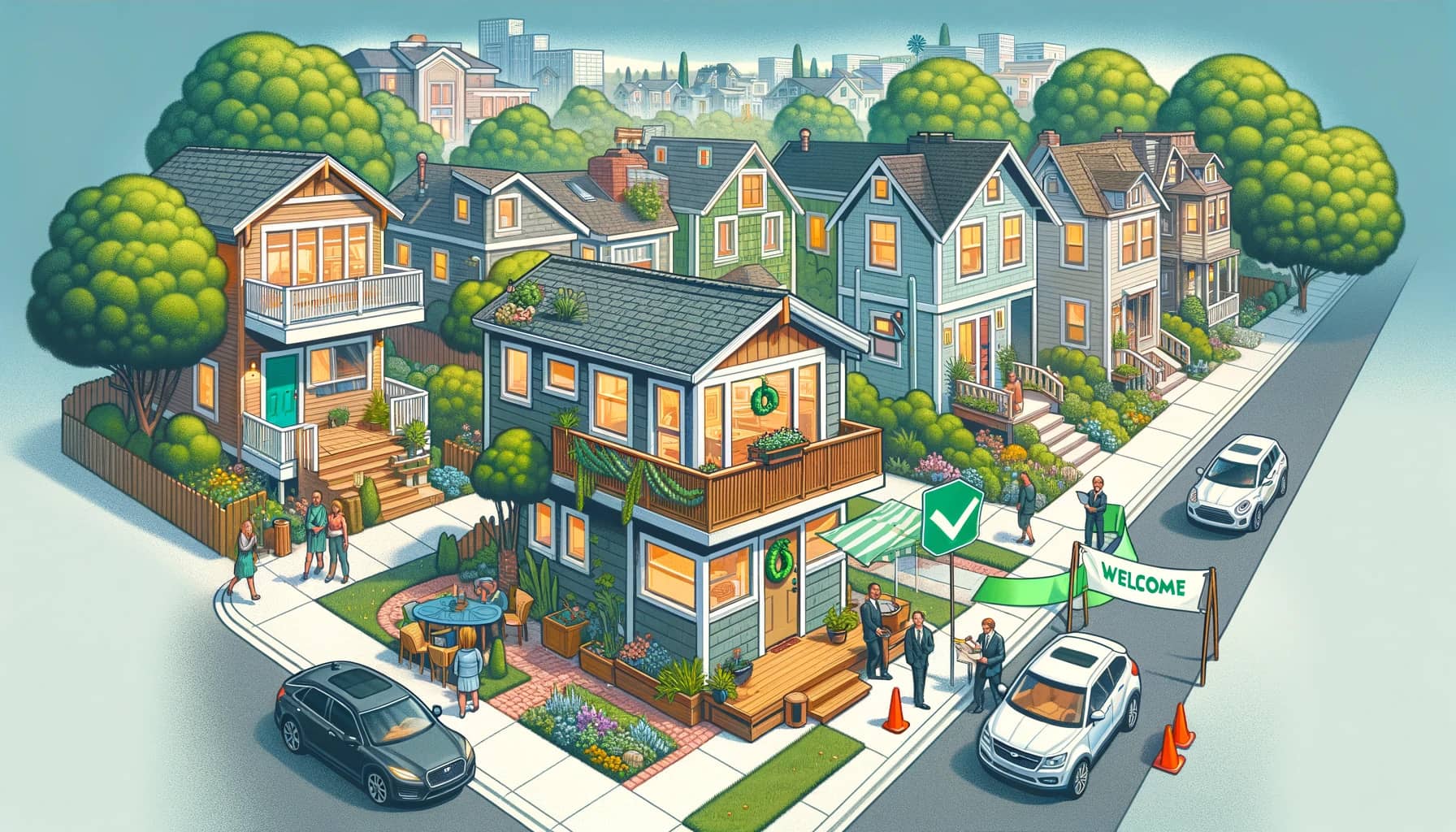Across the United States, environmental advocates are tirelessly seeking innovative strategies to mitigate the global environmental crisis. A promising approach that has garnered widespread support involves the proliferation of Accessory Dwelling Units (ADUs) within urban areas. These compact, efficient living spaces, also known as mother-in-law apartments, granny flats, or secondary units, offer a sustainable alternative to traditional housing, addressing both environmental concerns and housing affordability.
Understanding Accessory Dwelling Units
ADUs are versatile housing solutions constructed on the same lot as a primary residence. These units can vary in form, ranging from converted garages and basement apartments to tiny houses situated in the garden or alongside the main house. Integral to the property, ADUs share ownership with the main residence, ensuring they are not sold separately. This close association with the primary home underscores their role as complementary living spaces, growing in popularity due to their affordability and minimal environmental impact.
The Advantages of ADUs
The allure of ADUs extends beyond their potential to house extended family or generate rental income. They offer a practical solution for multigenerational living, enhancing familial bonds and easing childcare logistics. Economically, ADUs provide homeowners with an opportunity to offset mortgage costs while optimizing land use by offering two distinct living spaces on a single property. From an environmental standpoint, ADUs are celebrated for their energy efficiency, significantly reducing CO2 emissions compared to standard homes by utilizing less energy for heating, cooling, and daily operations.

The Environmental and Housing Impact of ADUs
ADUs are designed to be fully functional living quarters, equipped with all necessary amenities including kitchens, bathrooms, and private entrances. They cater to the growing demand for smaller, more sustainable housing options, challenging the conventional belief in the necessity of large living spaces. The environmental benefits of ADUs are manifold, with reduced energy consumption for heating, cooling, and lighting, alongside the conservation of resources through the minimized need for building materials and land development.
Legislative Changes and ADU Policies
Despite the clear benefits of ADUs, their adoption has been hindered by stringent zoning laws in many regions. However, recent legislative shifts in states like California and cities such as Seattle and Minneapolis have begun to ease these restrictions, recognizing the role of ADUs in addressing housing shortages and environmental challenges. These policy changes have spurred the growth of ADUs, contributing to the creation of more sustainable and affordable urban living environments.
Regulation Updates on Accessory Dwelling Units
Accessory Dwelling Units (ADUs) have been recognized for their positive impact on the environment, the economy, and family living arrangements. Despite historically stringent regulations governing their construction, recent years have seen a relaxation in these policies, contributing to the surge in popularity of tiny homes.
ADUs are particularly favored in densely populated regions from the East Coast to the West Coast, including Washington, D.C., and California, though their presence is also notable in suburban and rural settings. For those curious about the evolving regulatory landscape, here's a look at how some U.S. states are embracing change:
California
Facing a prolonged housing and affordability dilemma, California has made significant strides toward easing the crisis. Recent legislation now facilitates the addition of ADUs to single-family properties, enabling homeowners to expand their living spaces by converting garages or adding standalone units in their yards. This flexibility has not only allowed for the creation of additional living quarters but has also encouraged a broader adoption of ADUs in major cities such as Los Angeles, San Diego, and San Jose, offering a beacon of hope for mitigating housing shortages.

Washington
In 2019, Seattle, Washington, implemented groundbreaking changes to its housing policies, making it substantially easier for homeowners to incorporate ADUs on their property. By allocating 75% of residential land to these units, Seattle has not only enhanced its green credentials but also improved housing affordability. The city's elimination of mandatory parking spaces and owner-occupancy requirements further underscores its commitment to increasing low-income housing availability.
Minnesota
The Twin Cities have embraced ADUs as a solution to the escalating housing affordability crisis. With nearly 140 new units approved in 2019 alone, Minnesota's relaxed zoning regulations have paved the way for homeowners to transform their properties into multi-unit dwellings. This shift not only addresses housing scarcity but also plays a crucial role in reducing racial housing disparities, marking a significant step forward in creating more inclusive and sustainable communities.
These examples from California, Washington, and Minnesota illustrate the growing trend towards more flexible ADU policies across the United States, signaling a shift towards more sustainable, affordable, and inclusive housing solutions.
The Future of ADUs in Green and Affordable Urban Living
As more municipalities embrace ADUs through progressive legislation, the landscape of urban housing is evolving. ADUs stand at the intersection of affordable housing and environmental stewardship, offering a viable solution to the housing crisis while minimizing ecological footprints. The growing acceptance of ADUs reflects a broader shift towards sustainable urban development, promising a future where compact, efficient living spaces play a critical role in fostering environmentally friendly and inclusive communities.
Invitation to Embrace ADUs
The momentum behind ADUs presents a unique opportunity for homeowners and prospective dwellers alike to reconsider their living arrangements in favor of more sustainable and affordable options. Whether considering the addition of an ADU to your property or opting to reside in one, the movement towards ADUs represents a step forward in the quest for greener, more accessible housing solutions.

